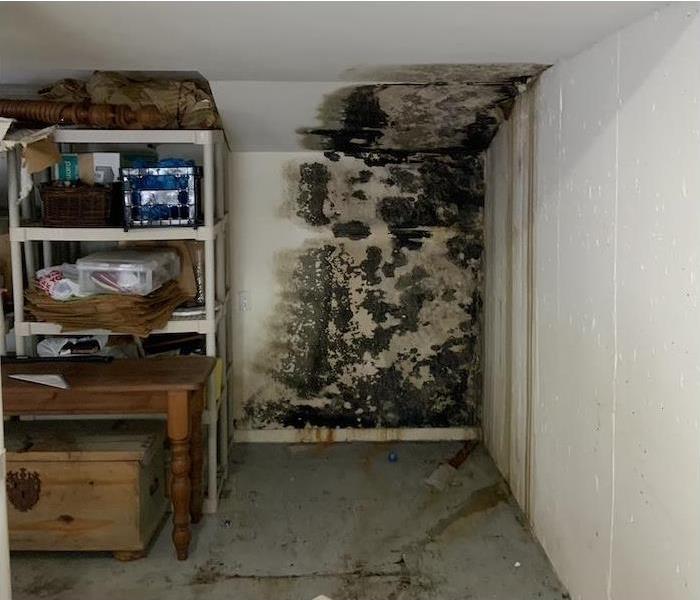What Methods Work Against Closter Mold Damage?
6/30/2022 (Permalink)
 Mold spreads quickly when the conditions are right. Contact SERVPRO to investigate the cause and remediate the damage on your Closter property.
Mold spreads quickly when the conditions are right. Contact SERVPRO to investigate the cause and remediate the damage on your Closter property.
SERVPRO Technicians Handle Closter Mold Infestations Professionally
It is not unusual for Closter homeowners to attempt to handle mold remediation on their own using various DIY methods. This action can work against them by causing improper cleaning methods to become airborne mold spores. Once airborne, the spores can wind up in the ductwork and get distributed throughout the home via the HVAC system or through hitching a ride on shoes and clothing.
Attempting DIY mold damage remediation is the very situation that is sometimes the catalyst for a Closter mold damage problem. Once these airborne spores encounter damp conditions, they can germinate, grow and spread. A common misconception is spraying bleach and water mixtures on the visible mold to eliminate the problem. Using this method can allow mold behind the scenes to continue to thrive, but the bleach can also damage surfaces. SERVPRO IICRC Certified technicians can handle mold remediation in homes safely, including colony growth located in areas such as:
- Behind walls or ceilings
- Under floorboards and wallpaper
- Around leaks or damaged exterior areas
Inspection, Repair is Better Than DIY Mold Remediation
One of the best ways to avoid mold damage in a property is to inspect it regularly. Homeowners should look up at ceilings and look for wet spots on walls. A slow leak has the potential to lead to a large-scale mold damage issue that will continue to worsen until it is repaired. Sources of moisture or humidity can invite germination in naturally present mold spores that would otherwise float harmlessly throughout the home. Frequently handled areas within properties where mold damage is typical include:
- Air conditioning units
- Crawl spaces, attics, or basements
- Bathrooms around fixtures and showers
- Kitchens and appliances
Additions to Fight Against Mold Damage and Win
Besides looking over the home regularly and being alert for visible changes, homeowners can benefit from monitoring systems. Water monitoring can alert homeowners to leaks within the plumbing. Via a cellphone, pinpoint the likely location within the home for a fast fix before much water or mold damage occurs. Most of these systems fit seamlessly into existing eco-systems with other environmental monitoring ranging from fire alerts to air quality and intrusion.
Interior Humidity Levels Should Be Under 50%
The dehumidification unit on the home HVAC unit should be cleaned and maintained along with the rest of the system yearly. This enables the home's humidity levels to be held at levels that are not sustainable for mold growth. In the event of an unseen slow leak, the capture of humid air can assist in minimizing the amount of mold damage, if any, that happens before the repairs occur. Exhaust fans should be checked yearly to ensure that nothing is blocking the exit. Unfortunately, birds are notorious for making nests in the outtake pipes, which can block the flow of humid air and eventually lead to mold remediation. While mold spores can germinate as rapidly as 24 hours after a water damage event in a home, the lower humidity levels can assist in slowing this process down and tipping the scales in the homeowner's favor against dealing with mold damage situations.
SERVPRO of Northeast Bergen County at (201) 244-0100 brings professional mold damage remediation services to the local Closter area. The IICRC-trained and certified technicians can handle any type or size of mold colony infestation.






 24/7 Emergency Service
24/7 Emergency Service